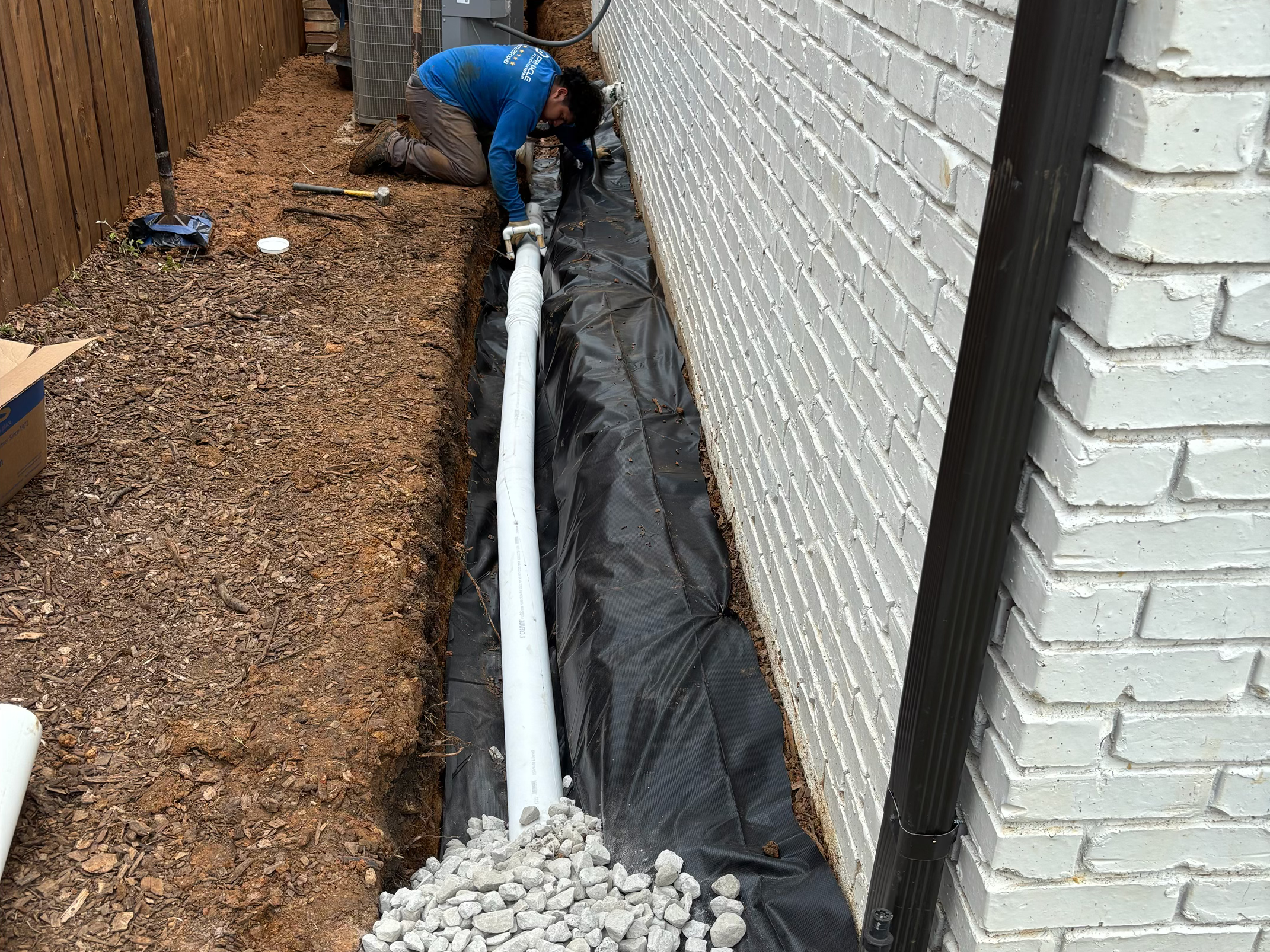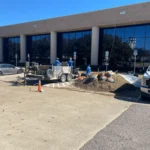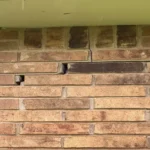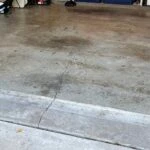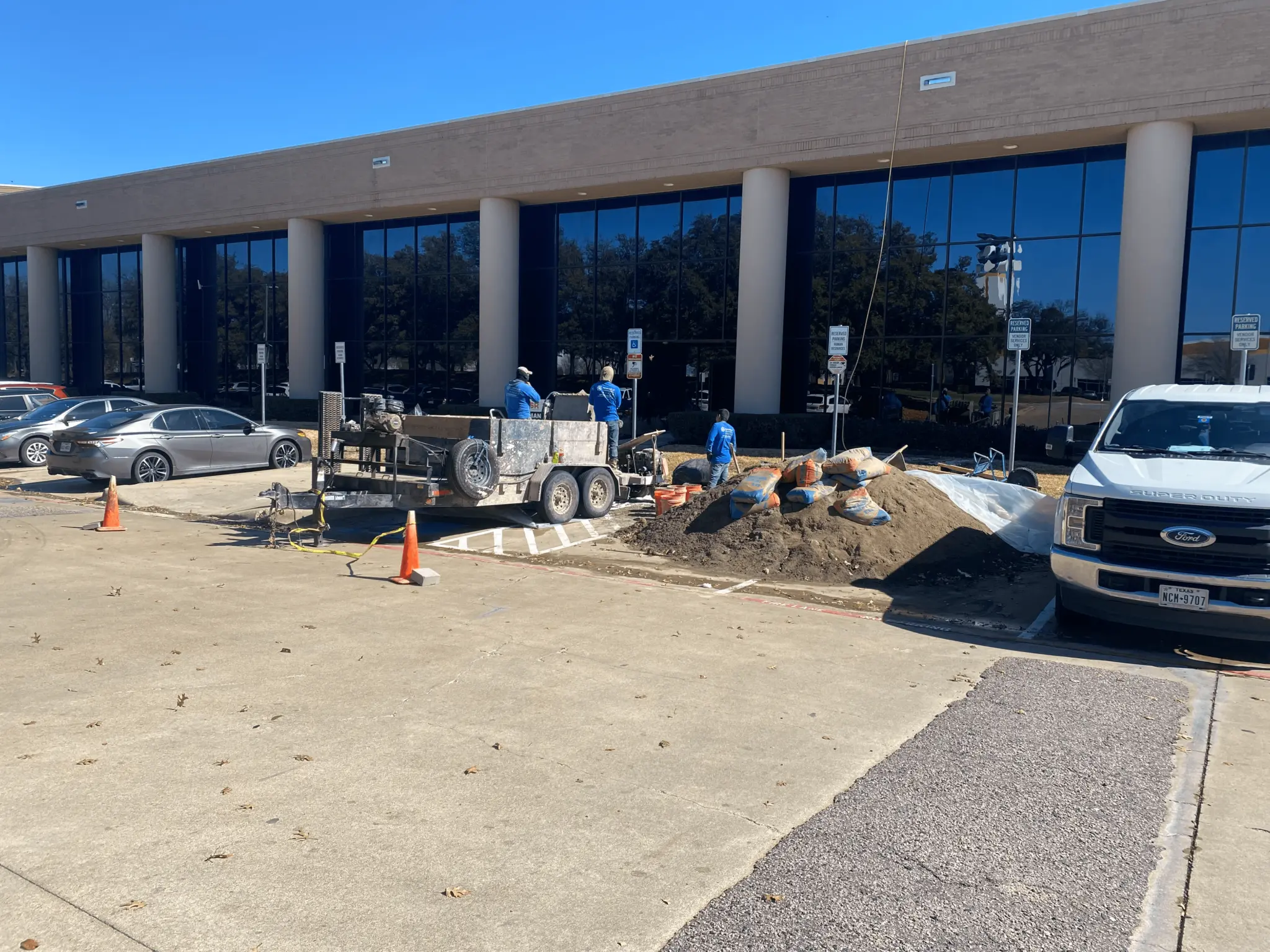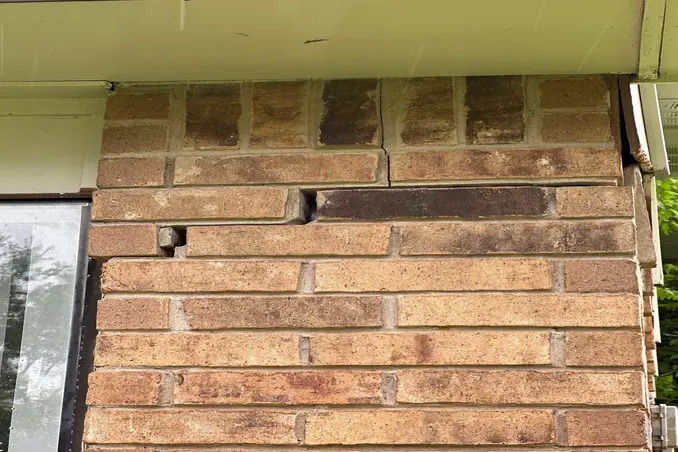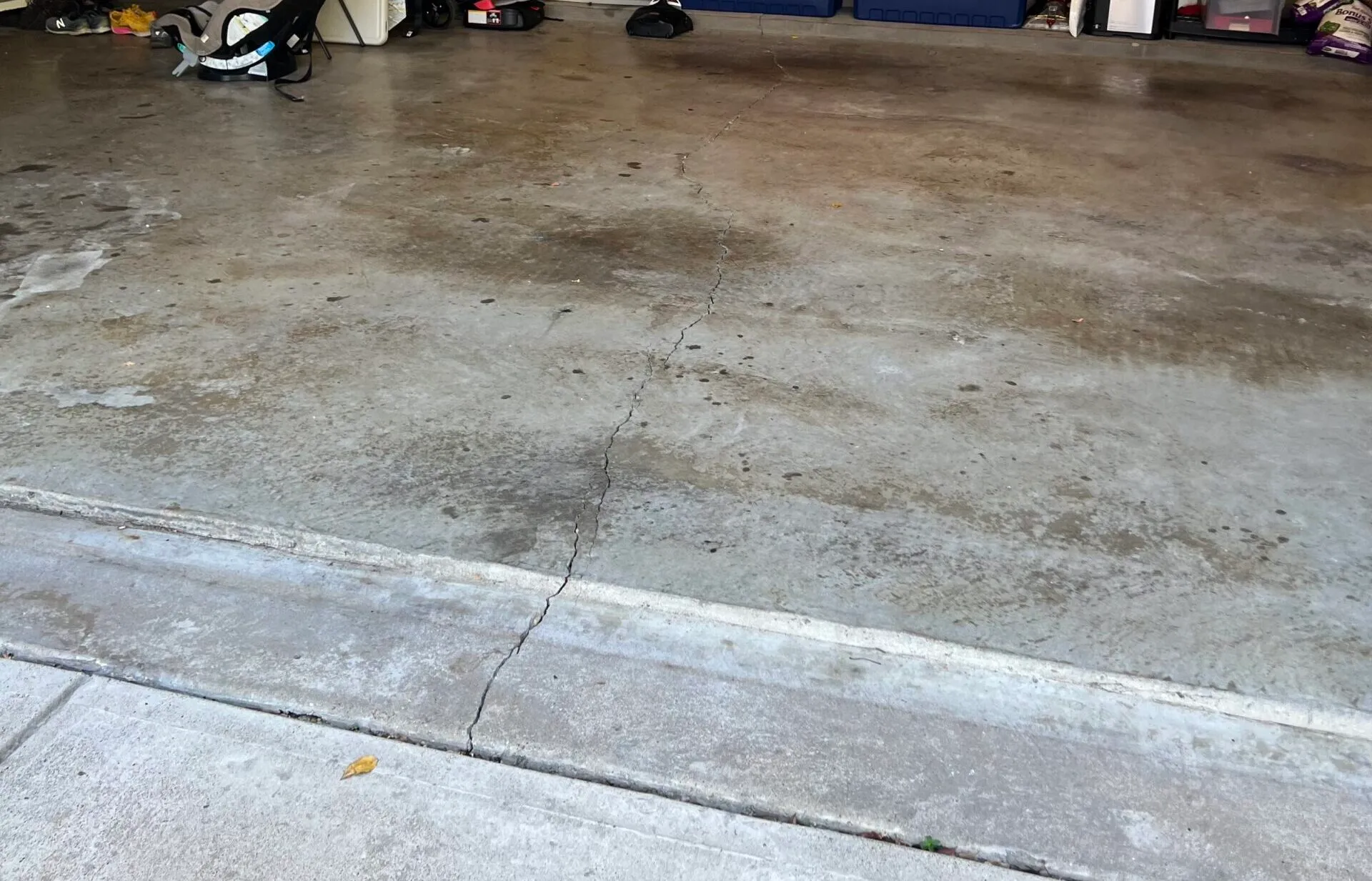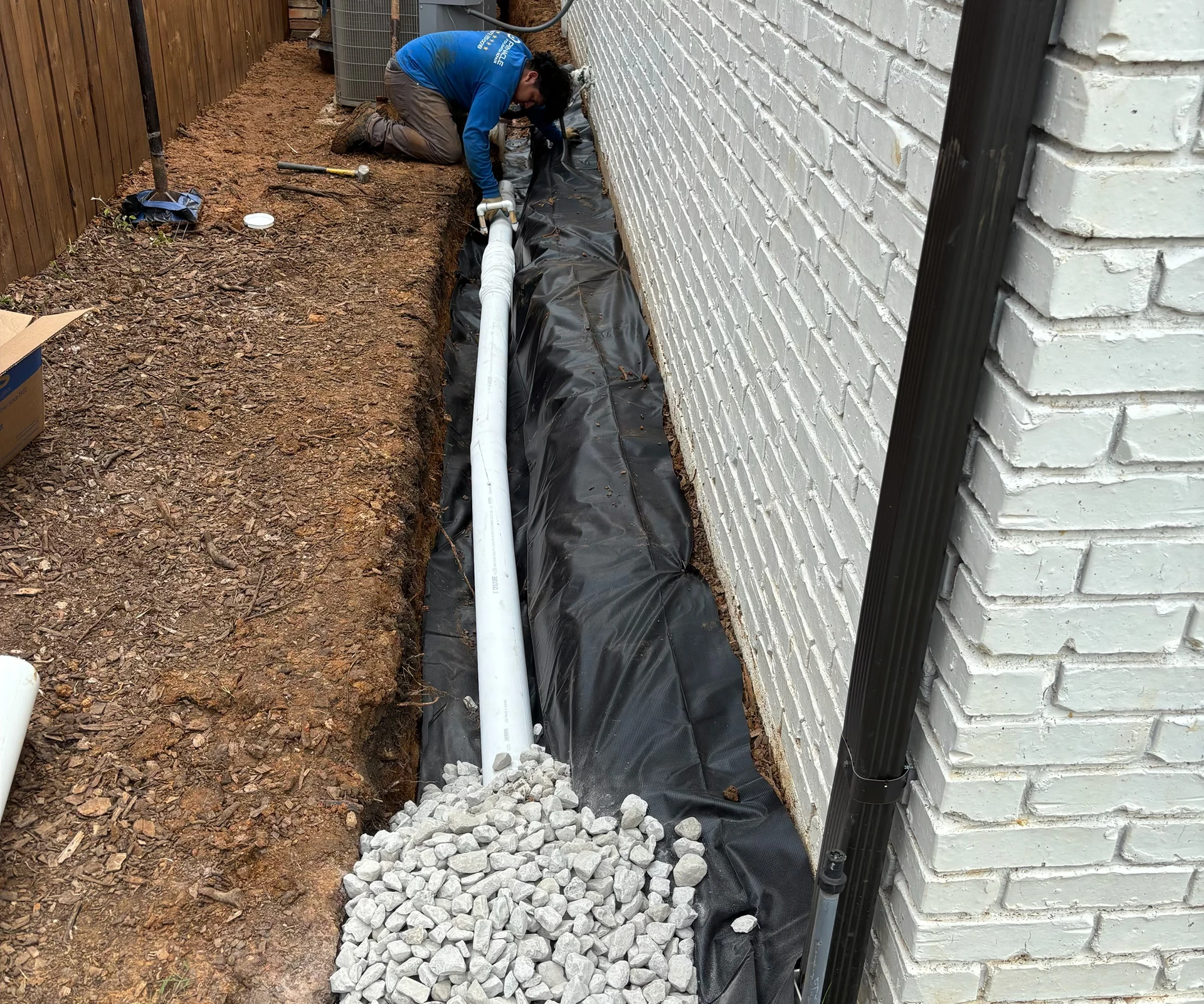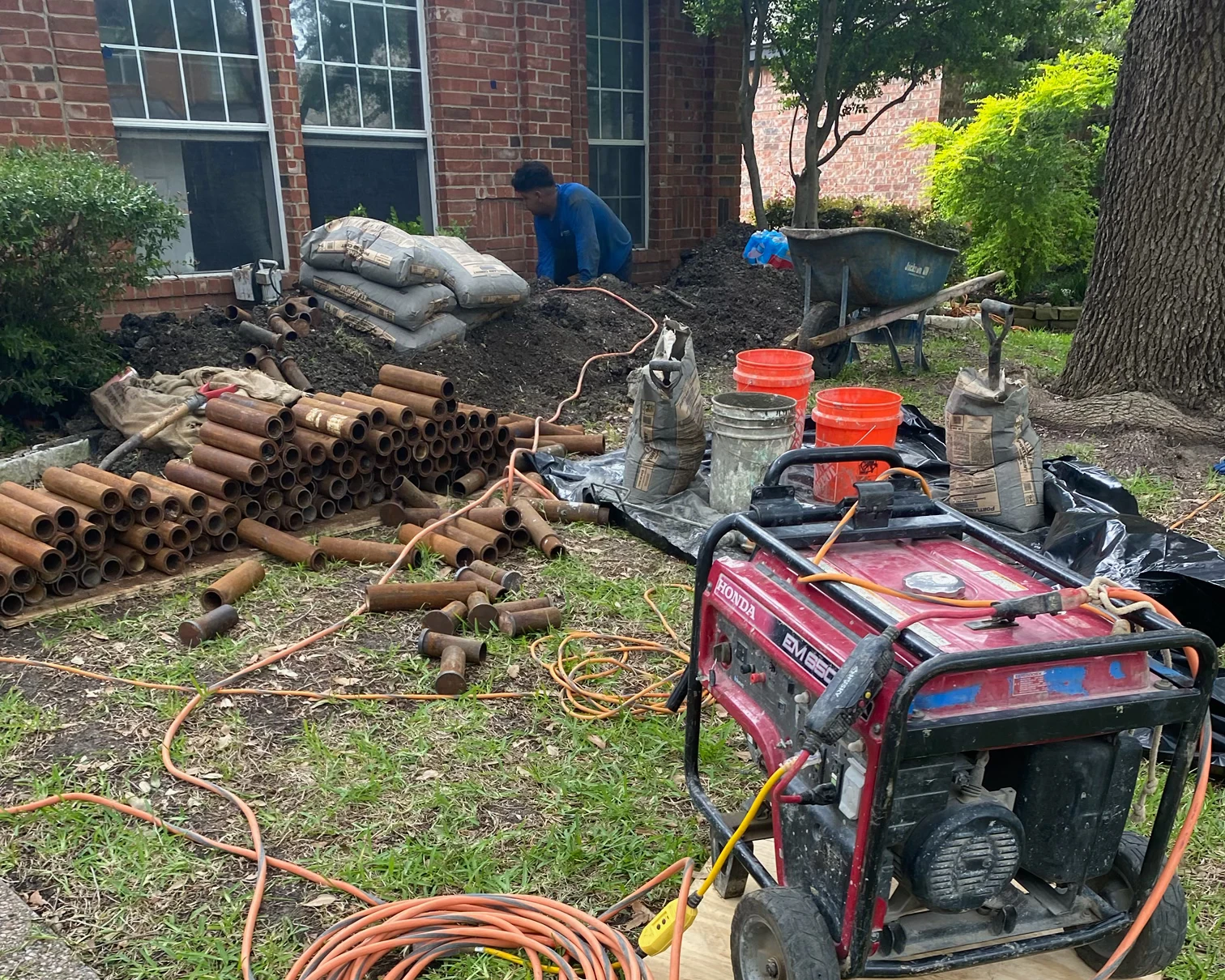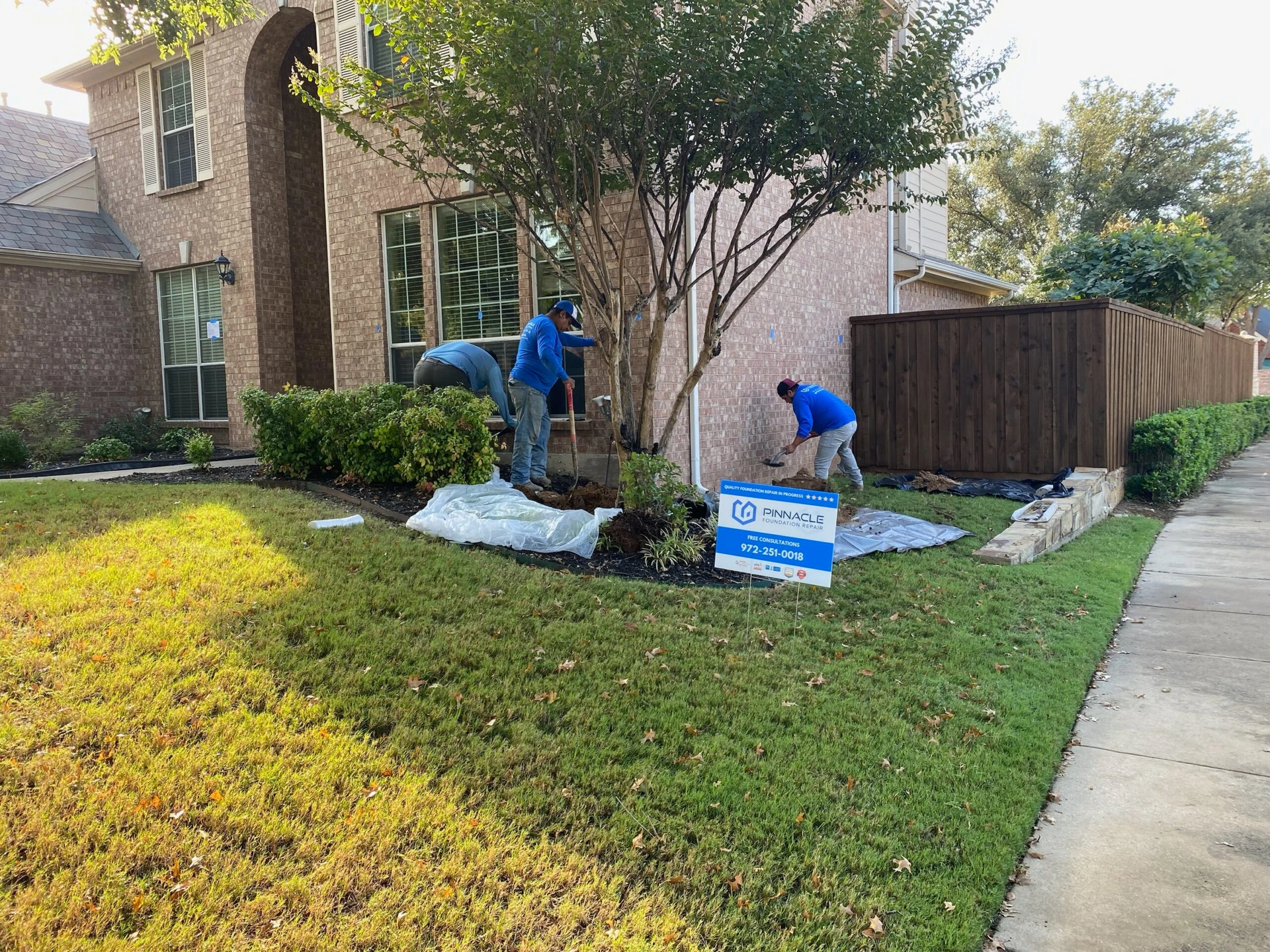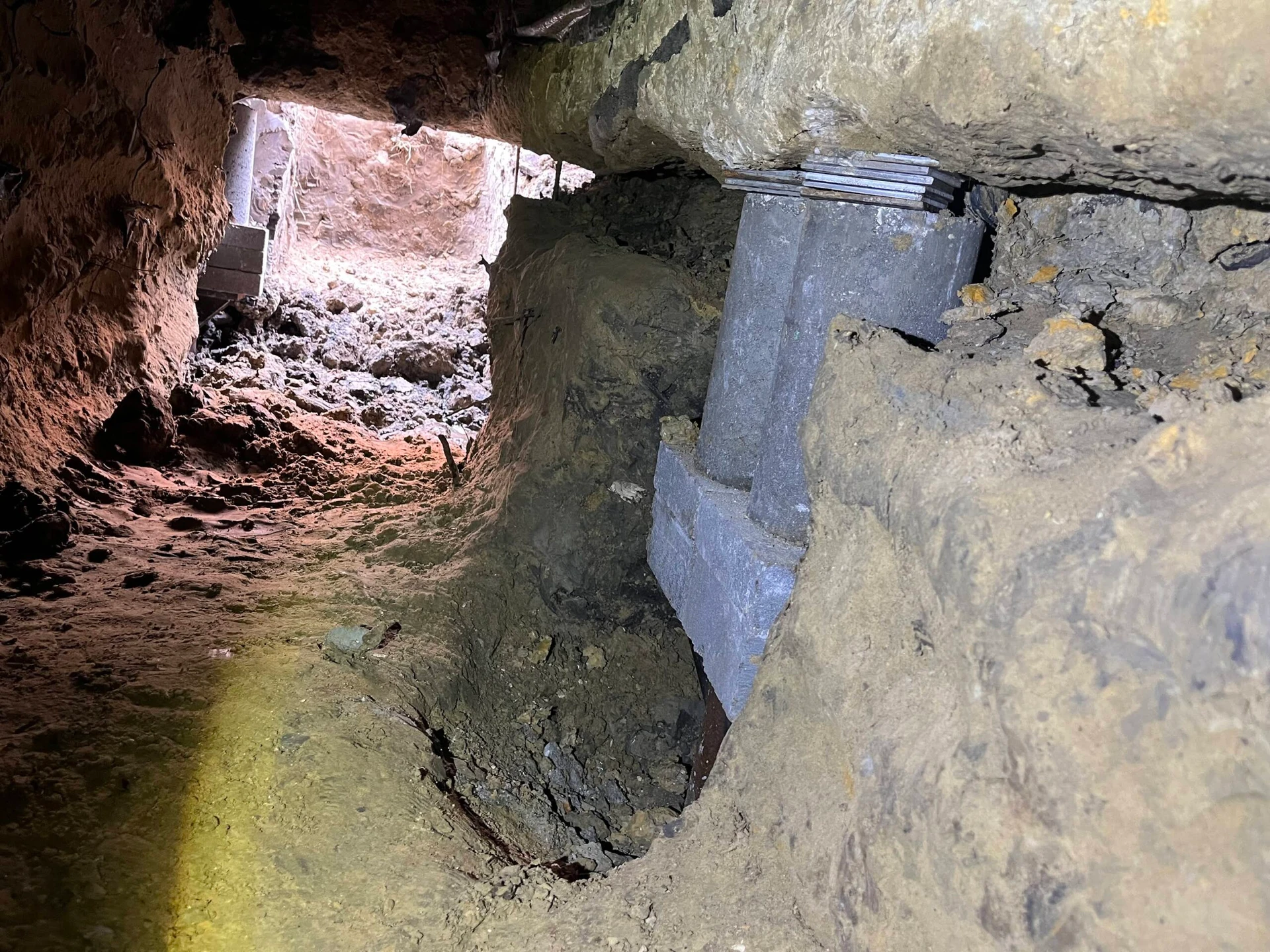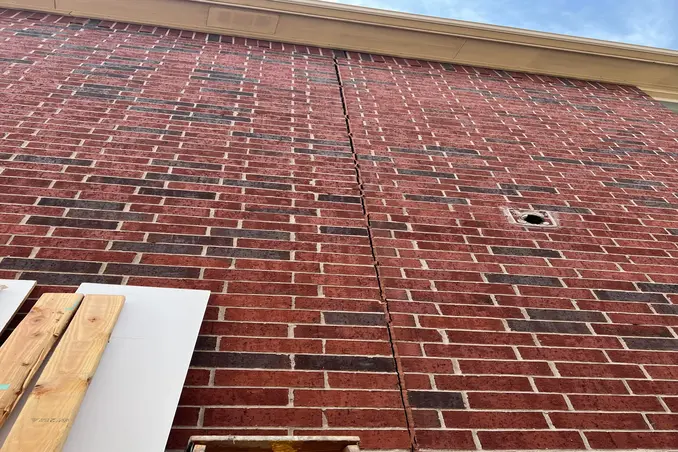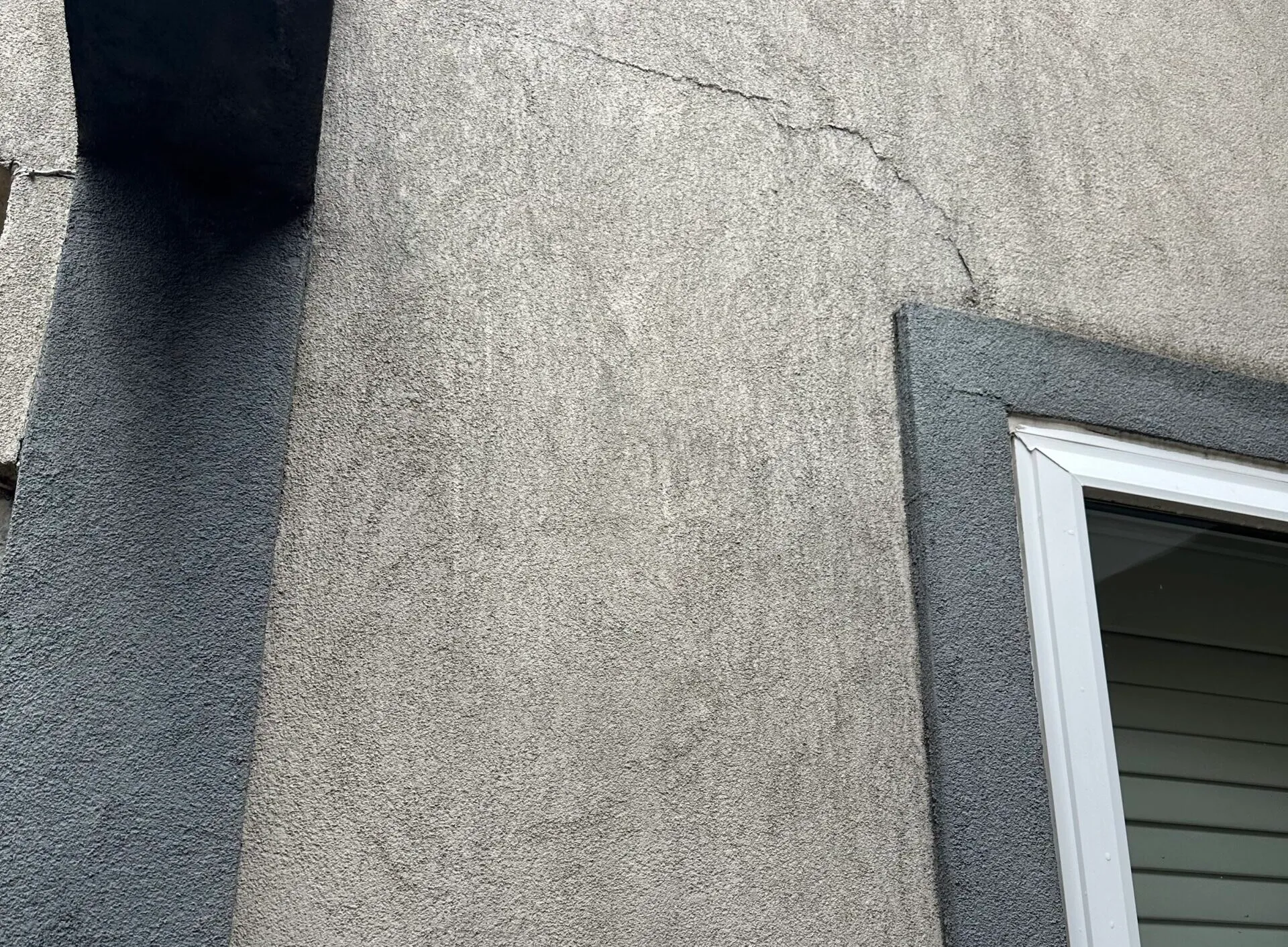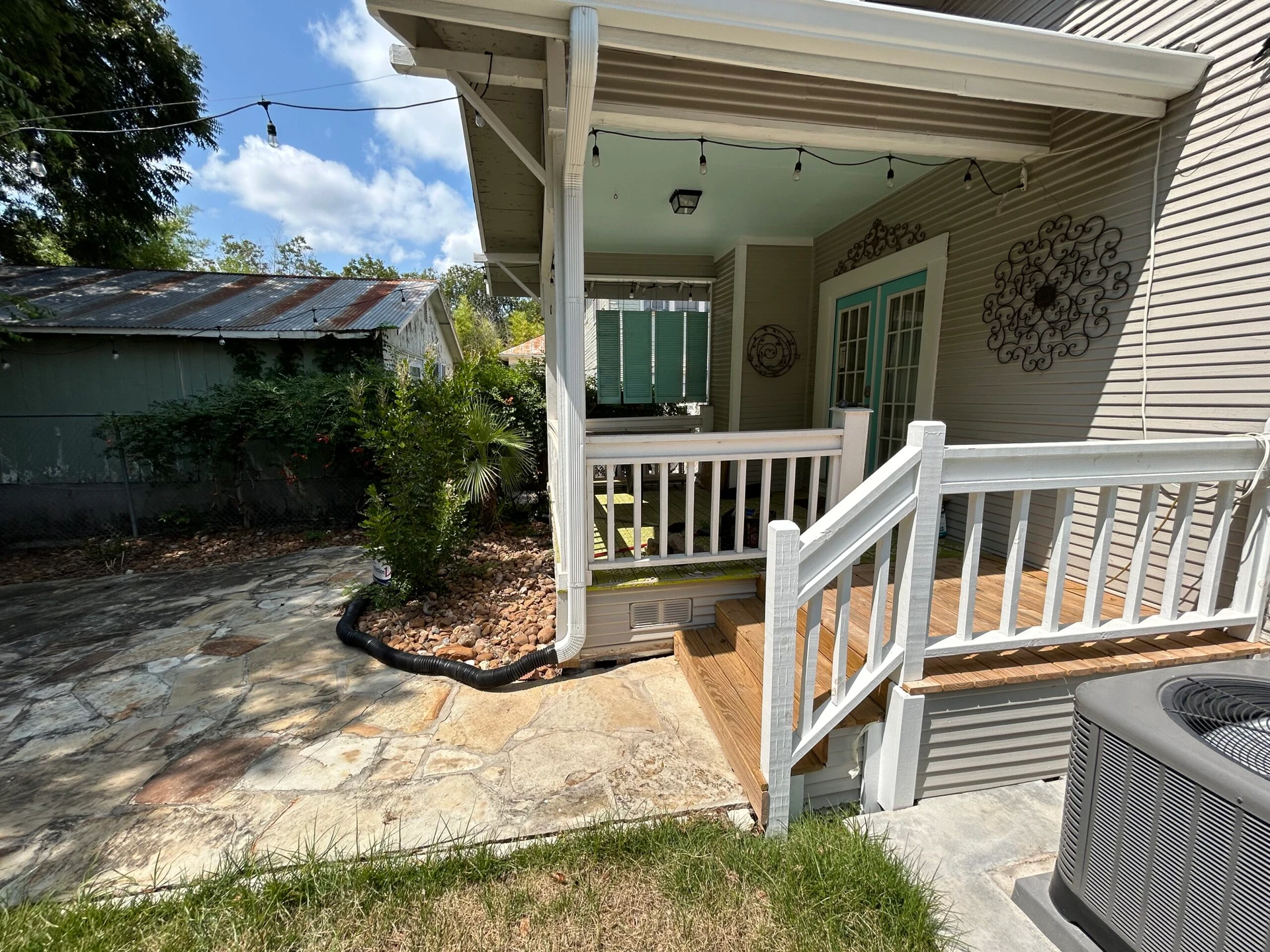Foundation walls do more than just support your home. They’re also responsible for holding water back from the surrounding soil so your basement or crawl space area remains dry. When foundation walls begin leaking, the moisture that becomes trapped under your home can lead to mold growth, rot, and structural issues.
You have a number of options for waterproofing the exterior foundation walls, but you may need to do a few repairs and drainage upgrades first. Learn what you need to know about drying out your home from the bottom up with this guide.
Signs Your Foundation Walls Need Waterproofing
You might need this kind of waterproofing if you’re experiencing issues like:
- Cracks in the foundation or basement walls
- Standing water in your basement or crawlspace
- Musty odors
- Mold and mildew growth in the basement or under the flooring on the ground floor
- Bowed basement walls
- Shifting or uneven floors
- Water stains and chalky white efflorescence on the exterior or interior of foundation walls
- Peeling paint and wallpaper on the first floor
- Sticking doors and windows
- Rusty fixtures in the basement or first floor
Rerouting Water Away from the Home
The first step in drying out a wet basement is to improve drainage around the home in general. Directing water away from the home with French drains and other buried drainage structures is easily accomplished while adding other exterior waterproofing materials. Some homes may only need this kind of drainage improvement to solve wet foundation issues.
Foam Injection and Mudjacking to Lift Sunken Areas
If the soil around your foundation has stayed wet for years, it may have already damaged the structure. Sunken or collapsed sections of foundation may need lifting with procedures like foam injection or mudjacking before the rest of the waterproofing efforts are completed. Foundations often crack due to frost and soil expansion over the winter. We’ll complete a thorough inspection to determine if other foundation repairs are needed before we tackle the waterproofing efforts. Without jacking or crack sealing, the moisture issue will only continue and may worsen over time.
Choosing a Waterproofing Method
Intact or repaired foundations may need one or more of the following waterproofing options to keep moisture out for good. Your foundation contractors can help you make the right choices based on the source of the moisture, the amount of water that penetrates your foundation, and your budget.
Exterior Waterproofing Membranes
Solid membranes made from materials like EPDM are installed on the exterior of the foundation walls, physically blocking moisture from seeping through the concrete. This method will stop all kinds of leaks and can handle the heaviest levels of moisture in the soil. However, excavation is needed to expose existing foundation walls for coating.
It’s best to install these membranes on new construction, but they can be added with enough excavation and preparation on the foundation walls. You should still add buried drains and other moisture management methods to reduce how much water reaches the membrane for the best results.
Liquid Waterproofing Methods
There are several liquid sealants that are applied to the outer surface of the foundation wall, creating a seamless barrier that prevents moisture from entering. These coatings go beyond the basic sealants often spread on the wall before backfilling. Most are thick and rubberized, providing years of protection against moderate water infiltration issues.
If used on existing foundations, these waterproofing sealants still require excavation to expose the surface. Yet, in most situations, less excavation is needed to access the foundation and coat it with a liquid than to spread a solid membrane. That means you can save a lot of money on installation costs by choosing an exterior waterproofing membrane. Keep in mind that they don’t tend to last as long as solid membranes in certain soil conditions.
Crack Sealing Injections
Exterior waterproofing efforts are a good start, but you should also target any damaged sections of the foundation walls for repairs that stop water flow. In addition to mudjacking or foam injection to lift sinking sections, consider injections that seal smaller cracks in foundation walls.
Professional crack sealing not only helps dry out the underside of the home and prevent leaks into your basement space, but it also improves radon scores inside the home. Only larger cracks need filling, yet even stable and non-damaging gaps may benefit from sealing to reduce moisture levels and protect the foundation over time.
Weeping Tiles and Dimple Boards
Also installed on the exterior of foundation walls, dimple boards are solid drainage devices that create a physical air gap between the soil and the wall. This allows for greater drainage, especially during storms and localized flooding. These boards tend to sit above weeping tiles or French drains installed at the base of the foundation to redirect soil. Weeping tiles and buried drains are also used to keep pier and beam foundations dry.
Internal Wall Sealants
While most solutions for sealing exterior foundation walls are applied from the outside, there are a few options for sealing the basement or crawlspace from the inside. However, these internally applied sealants lack the durability and moisture control power of external options like membranes and dimple boards. It’s best to keep the water from entering the foundation wall at all, and that requires a sealing method applied to the exterior. Still, you may want to add internal sealants to keep a crawl space foundation as dry as possible.
Sump Pumps
If there is no other option for controlling the water, installing one or more sump pumps will keep the foundation space drained. It’s best to only consider sump pumps a temporary fix until you can have other exterior foundation waterproofing solutions installed.
Find a Waterproofing Solution Today
Let Pinnacle Foundation Repair guide you to the right waterproofing solution for your home’s foundation. Schedule a free evaluation with our team to determine the best approach for drier crawlspace or basement and a healthier home overall. You can also explore our other resources regarding foundation repair and maintenance to ensure you’re not missing out on other timely repairs to protect your home.

